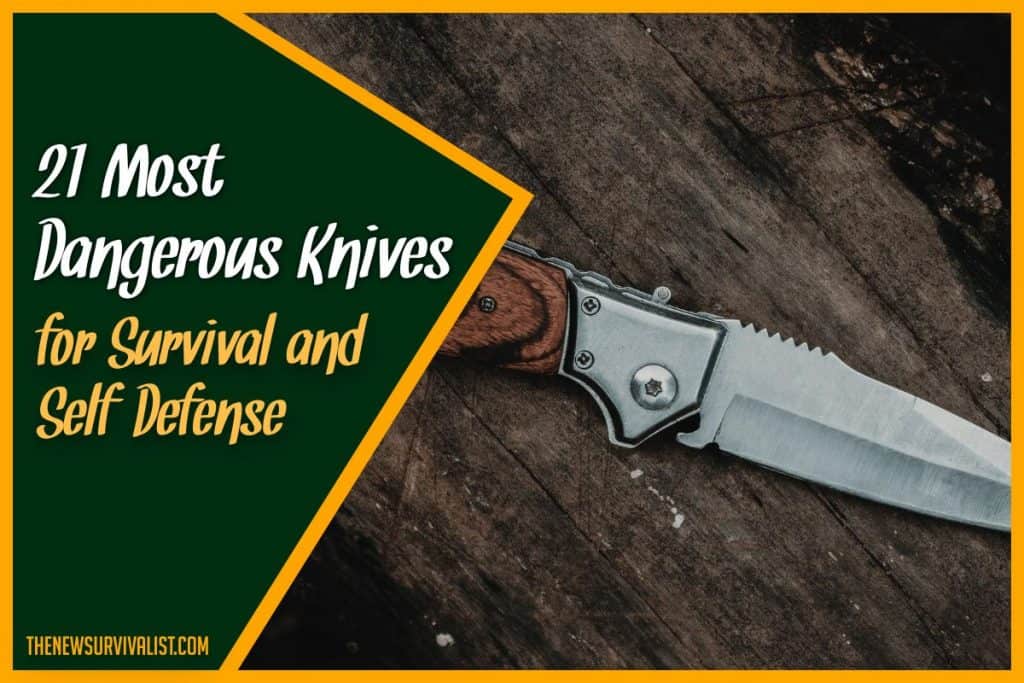All knives can be used for self-defense. However, not every knife can be deemed a survival knife. A survival knife should have a specific set of characteristics that makes it efficient, robust, and reliable for bush crafting and living in the wild.
Below is a list of survival knives:
- Joker Lynx
- Condor Bushglider
- Becker KA-BAR Harpoon
- MSK-1 Elite
- Gerber Strongarm
- BAJA 4.5
- Fallkniven S1x
- Buck GCK
- SRK (Survival Rescue Knife)
- Work Tuff Gear Elbrus
- TOPS Knives Apache Down
- KA-BAR BK7
- Schrade SCHF1
- Cold Steel Drop Forged Survivalist
Every day carry self-defense knives:
- Benchmade Griptilian 551 Knife
- Kershaw Shuffle Folding Pocket Knife
- Schrade SCHF54 Full Tang Push Dagger Knife
- Gerber Ghoststrike Knife
- KA-BAR, TDI Flipper Folder
- Benchmade 583 Barrage
- Schrade Viper 3 OTF
What Makes a Great Survival Knife?
Before proceeding, it’s important to set some standards on what makes a great and reliable survival knife. Below are the most essential features a survival knife should have.
Criteria #1: Fixed Blade, Full Tang
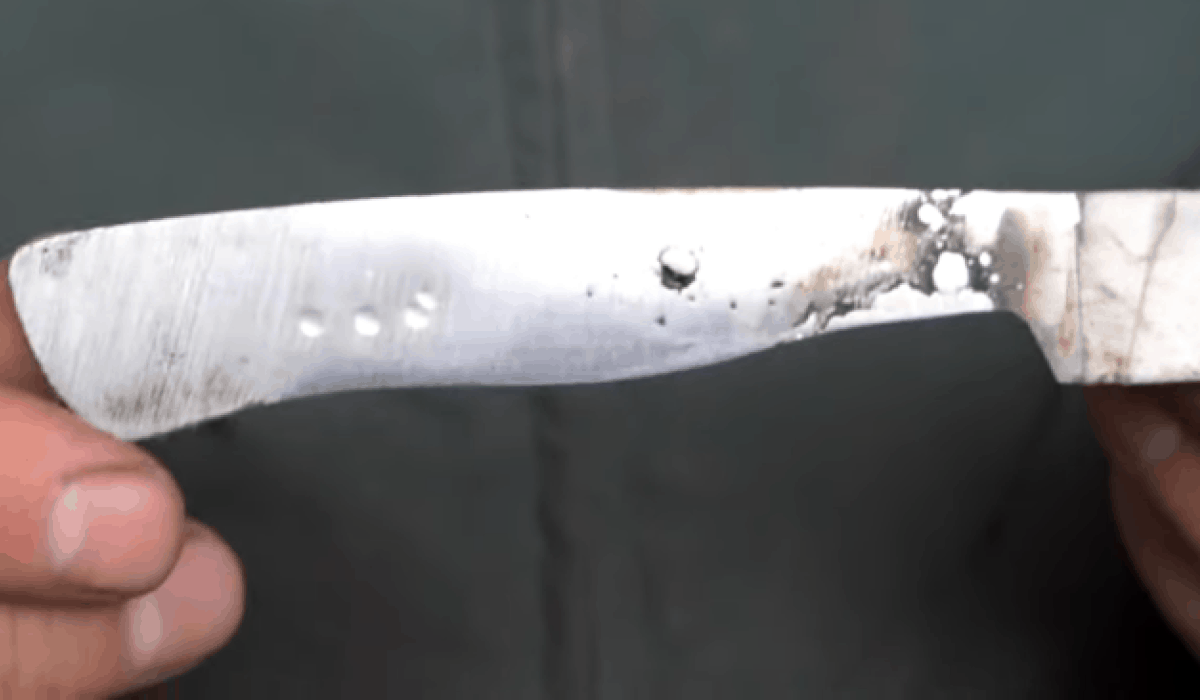
The tang of a knife is the extension of the blade that forms the handle. A full tang means that the extending metal is the same width and length as the blade or sometimes a little longer and wider. When the blade and the handle are made from a single piece of metal, without any kind of articulation or moving parts, it’s called a fixed blade.
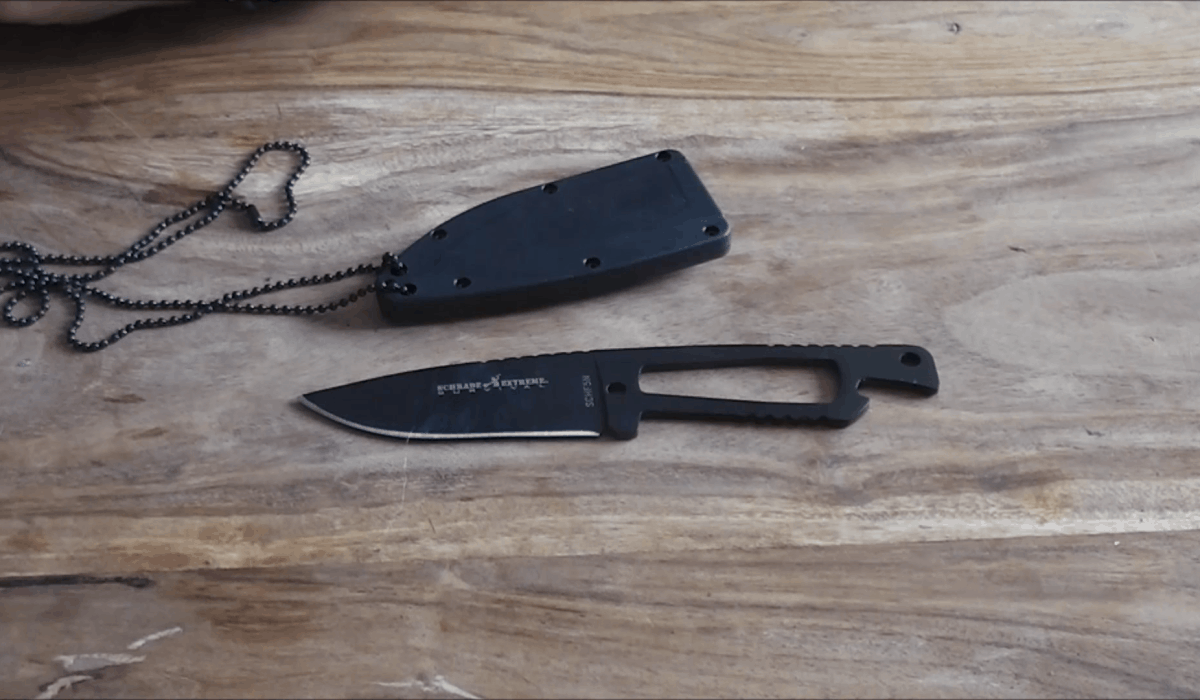
A variety of the full tang is the skeletonized tang. It has portions of material removed from the tang stock which makes it lighter. It is often found on knives like a bare-bone survival blade and neck knives. The Schrade SCHF5SM which is pictured above is an example of a barebone neck knife with a skeletonized tang.
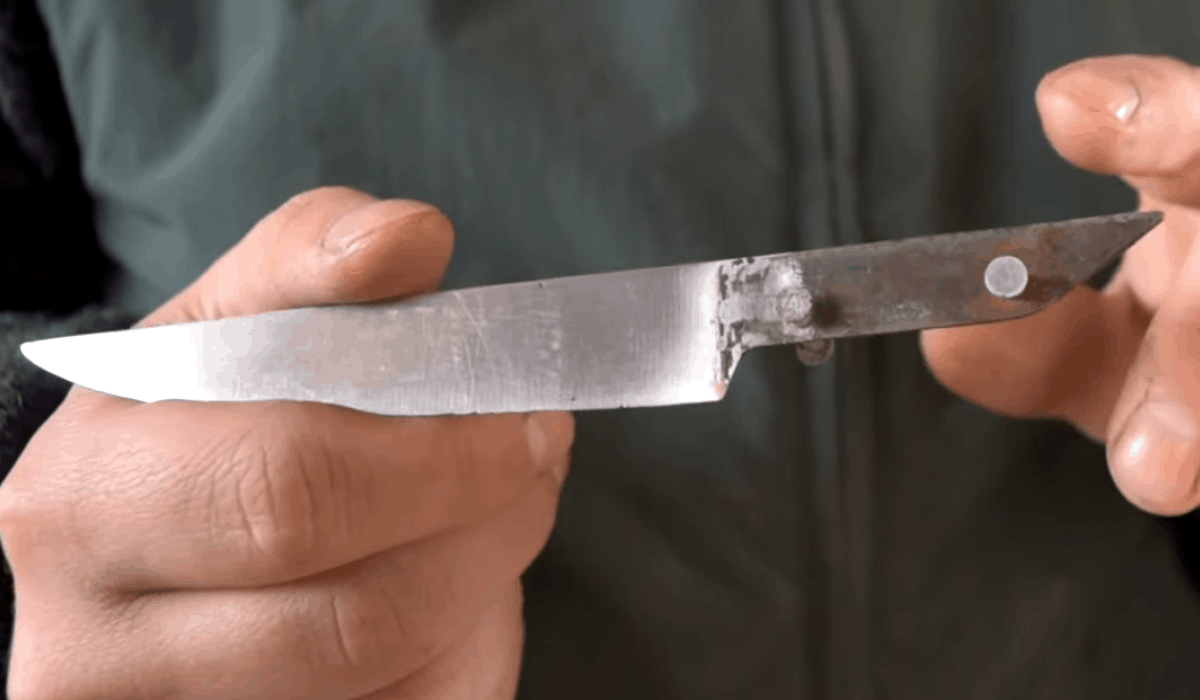
In contrast to a full tang, a knife that has a partial tang has an extension that is shorter, tapered, or slimmer than the actual blade. The rest of the width of the handle is made up of the handle material which can be rubber, plastic, wood, leather, and more. This design is often done to reduce weight and reduce the manufacturing cost.
A non-fixed blade is any blade that has articulation and is most commonly known as a folding knife or a switchblade. Due to their design, a non-fixed knife can never be a full tang even if the whole handle is made up of metal. These types are a poor choice for a survival knife as the joint or moving parts are a source of structural weakness which makes them less durable and unreliable in bushcraft.
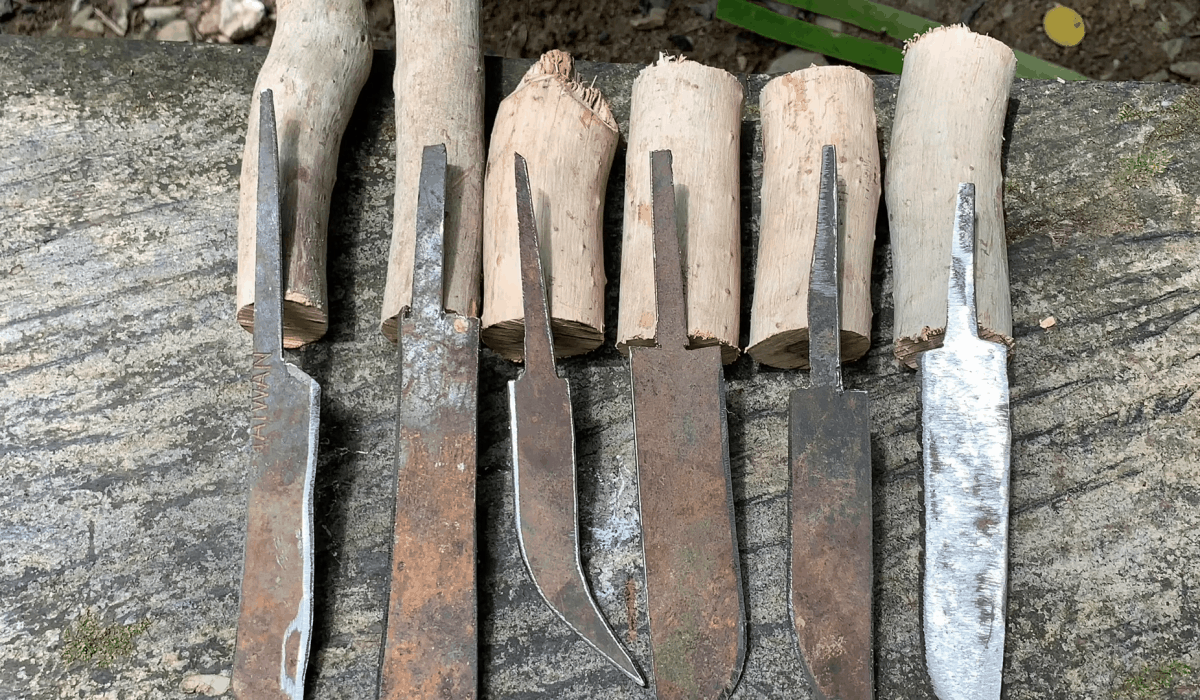
A knife with a partial tang is also less durable due to the slimmer or shorter metal that’s making up the handle. The handle on these knives tends to loosen over time and is prone to shattering. A full tang knife on the other hand is much more durable since the whole knife is made from a single piece of metal. It enables it to absorb and resist shock and vibrations much better, making it sturdier and more reliable for bush crafting.
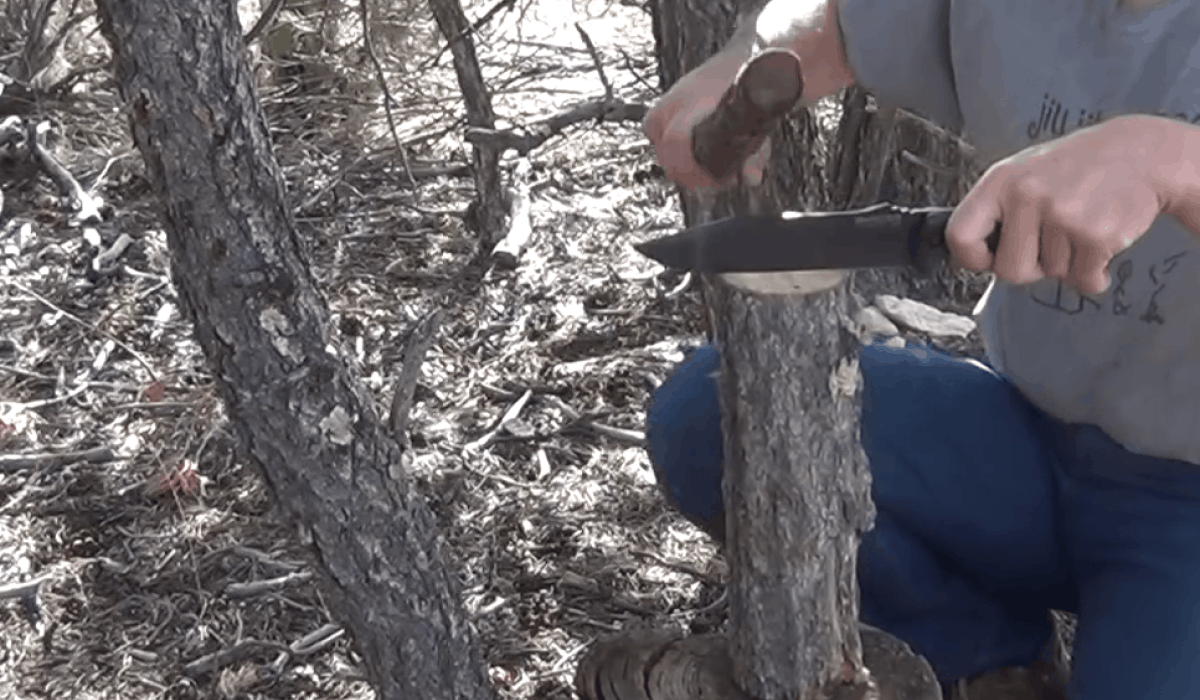
Batoning is a technique for cutting or splitting wood by using a baton-sized stick or mallet to repeatedly strike the spine of a sturdy knife in order to drive it through the wood. It’s an essential survival technique that makes it possible to split and chip away at logs without the need for an axe. This technique can only be done with a full tang, fixed blade knife. Attempting it with a partial tang knife, or a folding knife can damage the knife itself.
Criteria #2: Blade Material
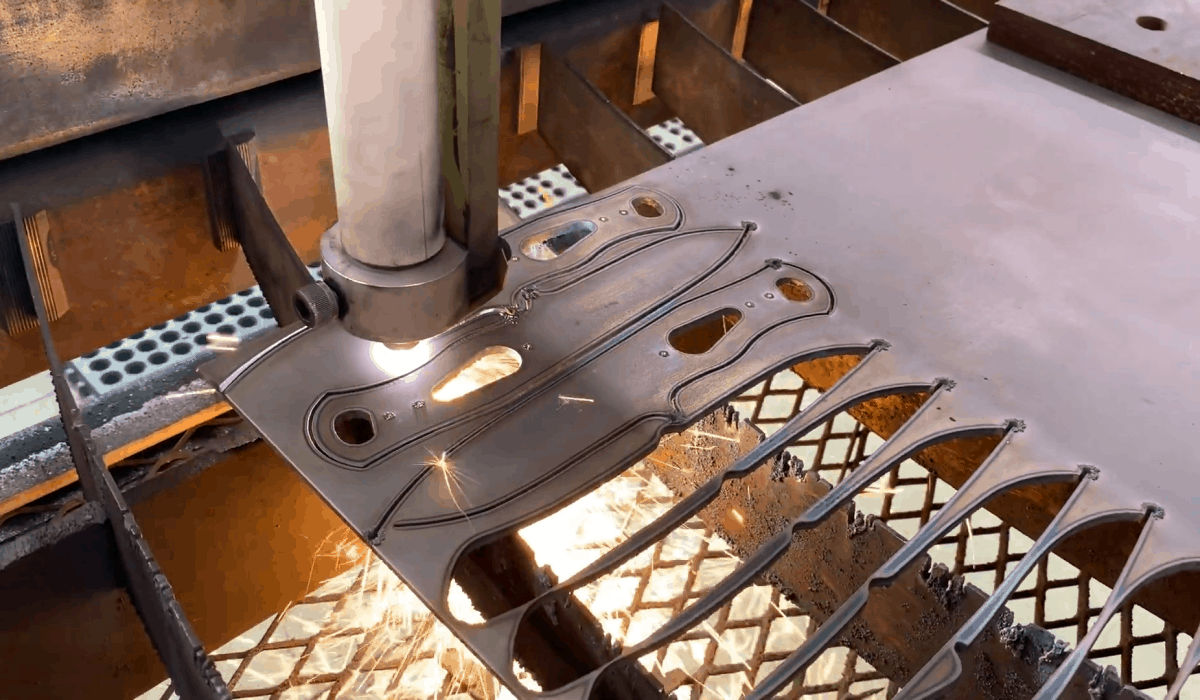
Two types of metal that are reliable and sturdy enough for survival use, are high-carbon steel and stainless steel. Both types of metal will have their set of advantages and disadvantages.
High-Carbon Steel: This type of metal is very hard which makes them good at resisting abrasion and retaining shape. They can withstand significant force and compressive stress (striking/hammering) before deforming. Moreover, this type of metal retains its sharp edge longer and is easier to hone and sharpen.
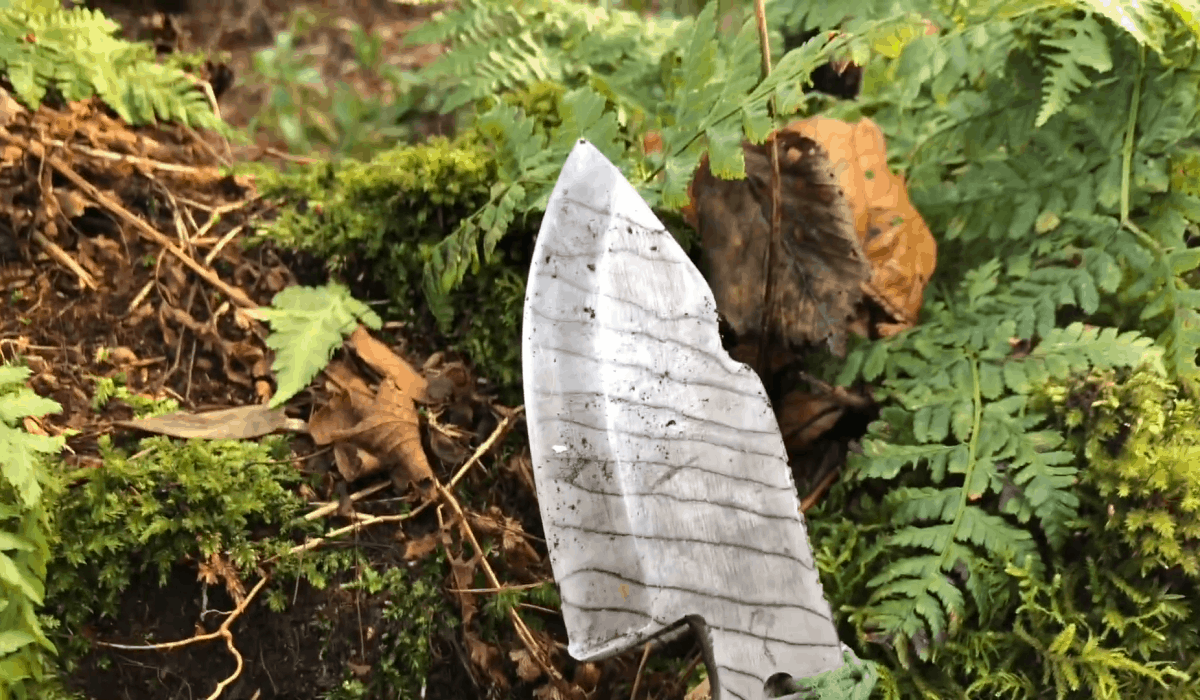
Unfortunately, due to the lack of chromium, it tends to discolor and rust easily as compared to stainless steel. Additionally, high-carbon steel is weak to tensile stress and may cause it to shatter rather than deform. Any action that involves bending the blade of the knife, such as using it as a lever for prying things will apply tensile stress and may potentially cause shattering of the blade.
Stainless Steel: The addition of chromium is the key to making a stainless-steel knife stainless. During forging, the chromium content creates an oxide layer that protects the knife from corrosion and rusting. It’s also softer relative to high-carbon steel, which means it will deform first before it shatters.
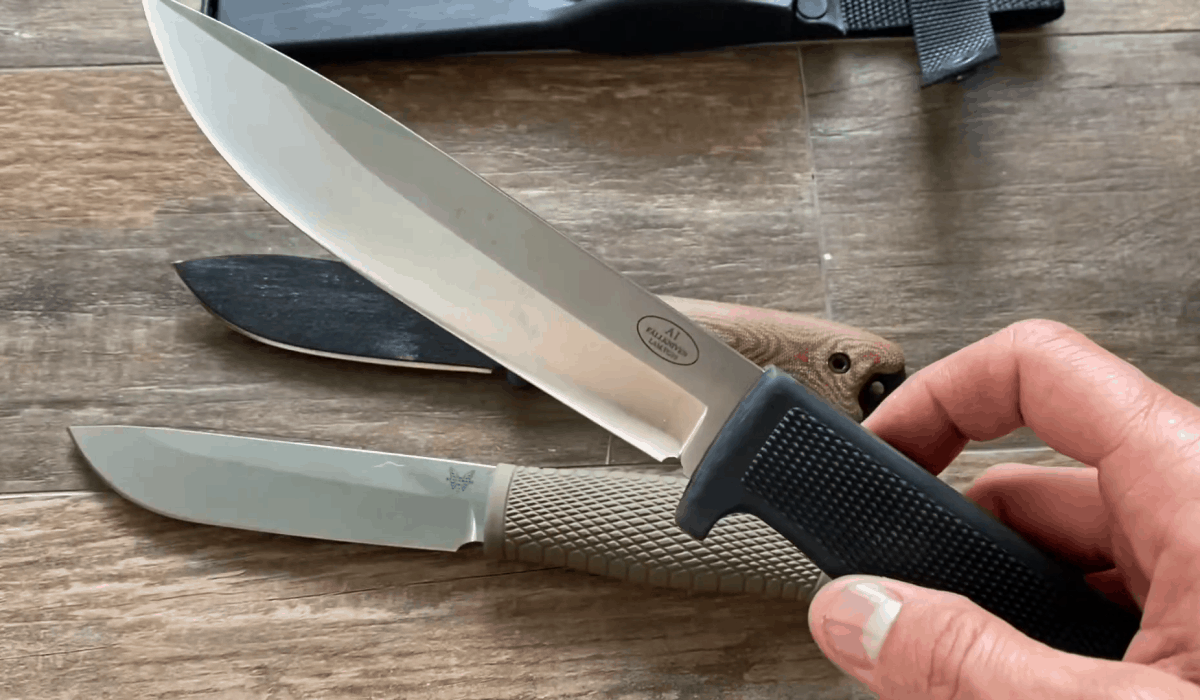
However, the stainless steel being softer also means that it will not retain its edge longer. It is also harder to sharpen compared to high-carbon steel. Furthermore, being stainless does not mean that it’s 100% corrosion and rust-proof.
It will still discolor and rust if not properly taken care of, albeit in a slower manner in contrast to high-carbon steel. Additionally, once the oxide layer is removed through abrasions, the underlying steel will rust as fast as high-carbon steel.
Carbon-Steel Pros and Cons
- (+) Extremely durable
- (+) Cheaper
- (+) Easier to sharpen
- (-) Brittle
- (-) Prone to corrosion and rusting, hence, will lose its sharpness faster
- (-) Needs careful maintenance
Stainless-Steel Pros and Cons
- (+) Corrosion resistant [it will still corrode, but at a slower rate]
- (+) Retains sharpened blade longer
- (+) Durable
- (+) Requires less maintenance
- (-) Expensive
- (-) Harder to sharpen in the field
Despite the pros and cons of these two metals, they are two of the best material for survival knives. It will all boil down to user preference and the environment. The salty air emanating from the sea will corrode and rust high-carbon steel faster compared to any other location.
Criteria #3: Blade Length, Width and Thickness
The ideal blade length is around 4 to 8 inches. A smaller knife will not be useful for rugged tasks such as batoning wood, while a longer, larger knife will be harder to use for detailed work such as carving precision hunting snare sets. It’s also important to consider the thickness of the blade.
A thin blade will not be durable enough for striking even if it’s a full tang knife. A thickness of 3 mm to 7 mm is thick and durable enough for batoning but is still slim enough for finer tasks such as carving.
Criteria #4: Continuous Edge with No Serration
The edge of a survival knife should be continuous without any design or serration. Serrations will make it difficult to sharpen the knife and makes it harder to carve, cut, and split wood. Instead, serrations should be located at the spine aka the back of the knife. However, it’s not an essential feature of a great survival knife but can be useful in specific situations like cutting cloth or a rope.
Survival Knives
Every survival knife featured in this article is a full tang, fixed blade knife.
Joker Lynx
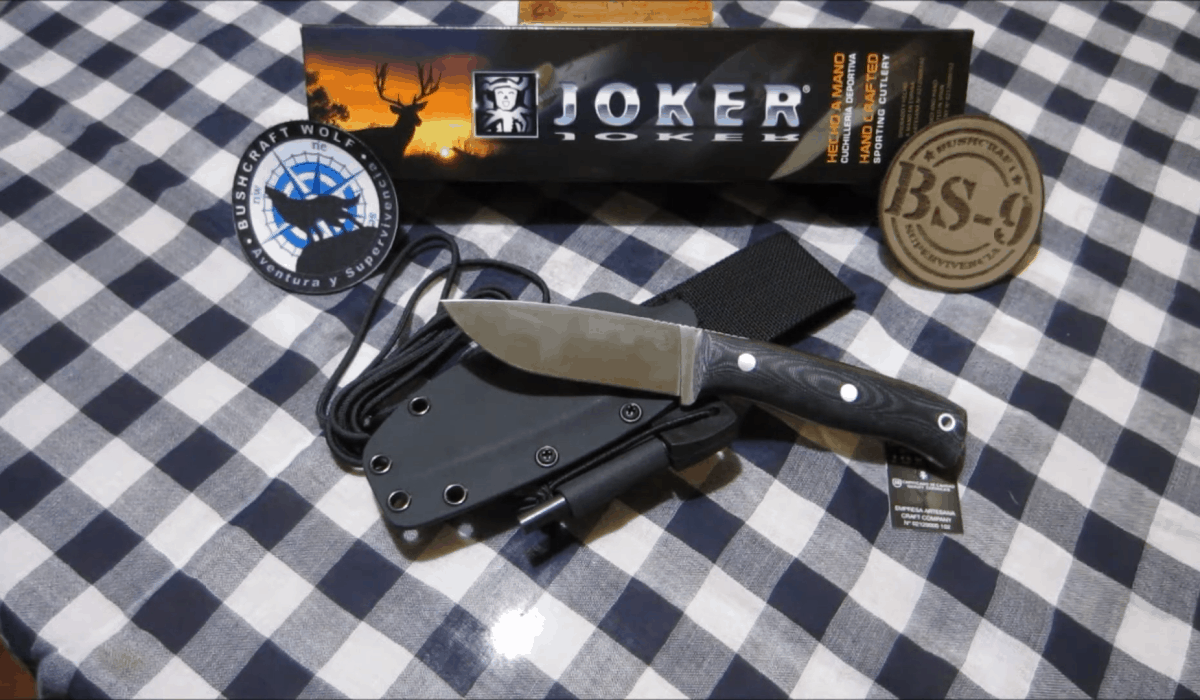
Blade Length: 4.1 inches (10.5 cm)
Blade Thickness: 4 mm
Overall Length: 9 inches (22.8 cm)
Steel Type: Stainless Steel
Weight: 6.7 oz (190 g)
Condor Bushglider
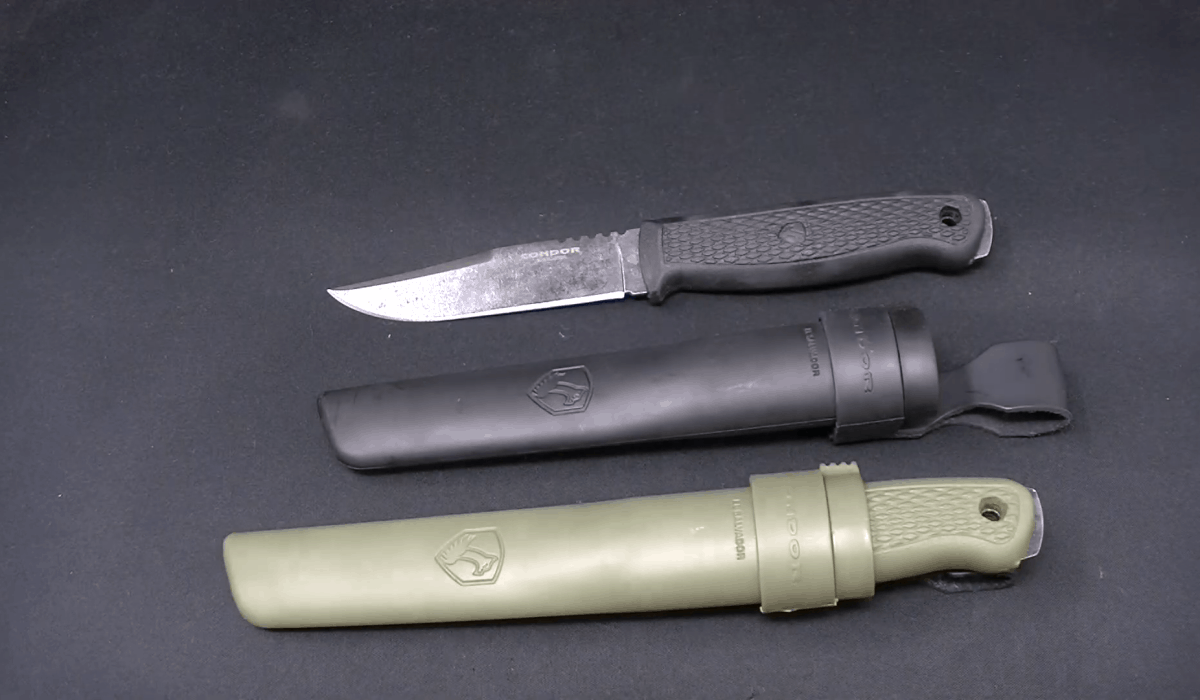
Blade Length: 4.25 inches (10.8 cm)
Blade Thickness: 3 mm
Overall Length: 9 inches (22.8 cm)
Steel Type: High Carbon Steel
Weight: 4.53 oz (128.4 g)
Becker KA-BAR Harpoon
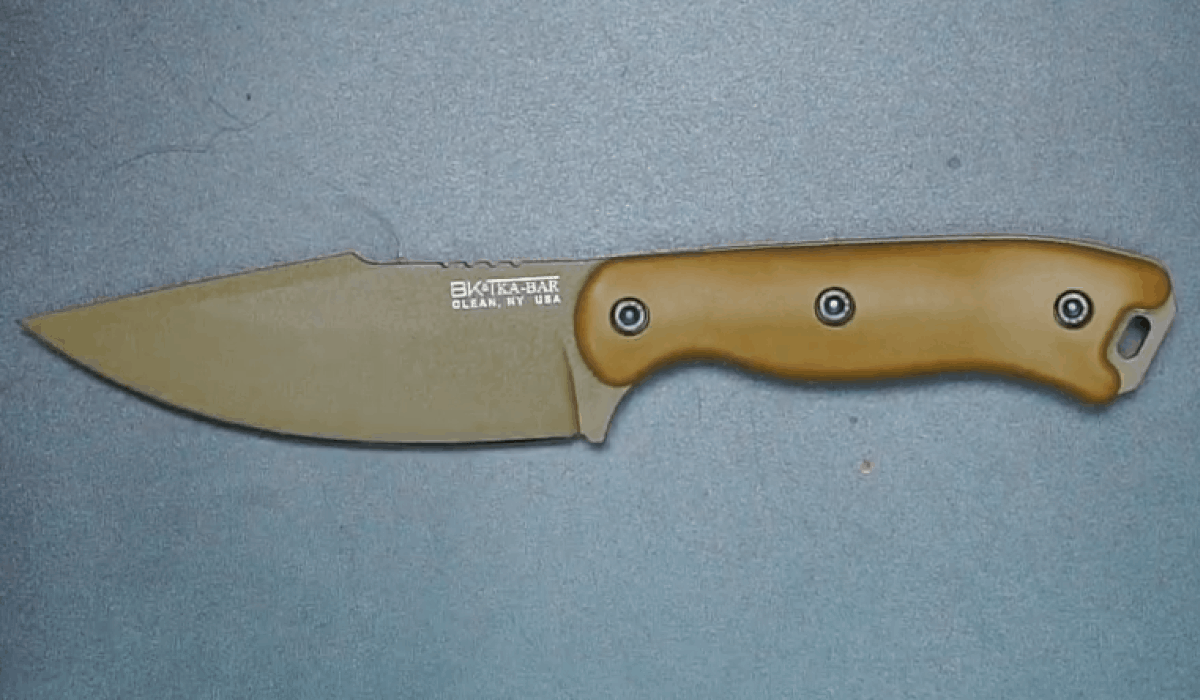
Blade Length: 4.5 inches (11.43 cm)
Blade Thickness: 4.4 mm
Overall Length: 9.25 inches (23.5 cm)
Steel Type: High Carbon Steel
Weight: 6.85 oz (194 g)
MSK-1 Elite
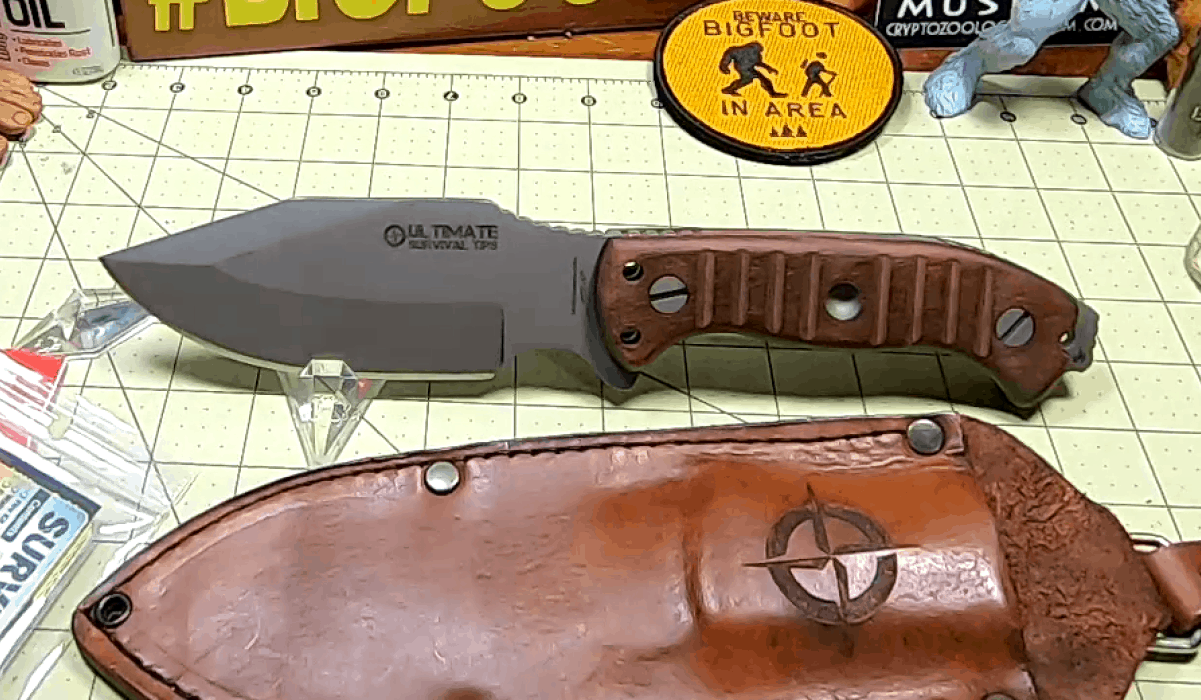
Blade Length: 4.6 inches (11.7 cm)
Blade Thickness: 6.4 mm
Overall Length: 11.3 inches (28.6 cm)
Steel Type: Stainless Steel
Weight: 15.3 oz (434 g)
Gerber Strongarm
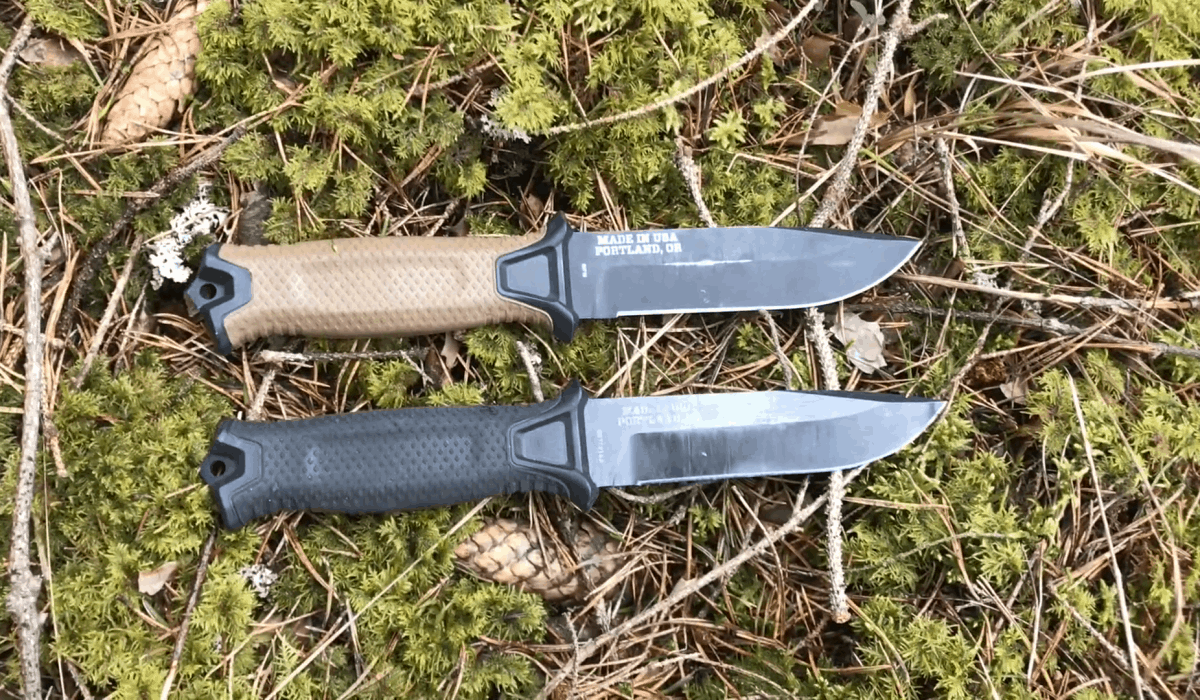
Blade Length: 4.8 inches (12.1 cm)
Blade Thickness: 4.7 mm
Overall Length: 9.8 inches (24.9 cm)
Steel Type: High Carbon Steel
Weight: 7.2 oz (204 g)
BAJA 4.5
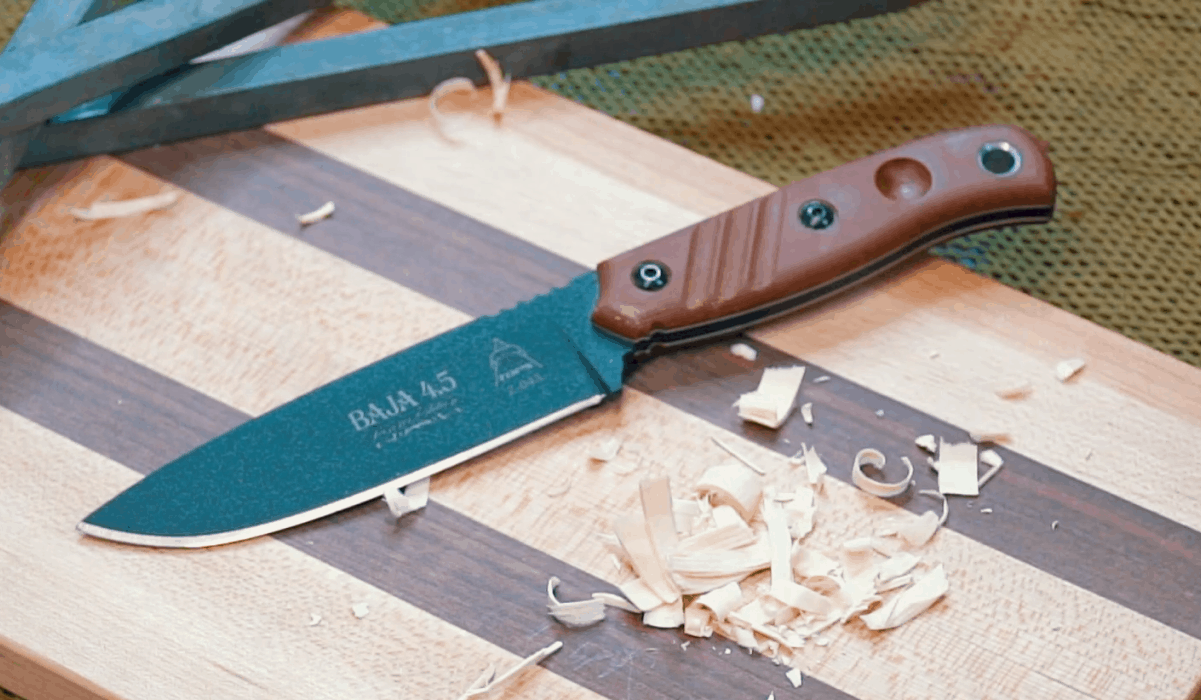
Blade Length: 4.88 inches (12.4 cm)
Blade Thickness: 4 mm
Overall Length: 9.25 inches (23.5 cm)
Steel Type: High Carbon Steel
Weight: 6.2 oz (175.7 g)
Fallkniven S1x
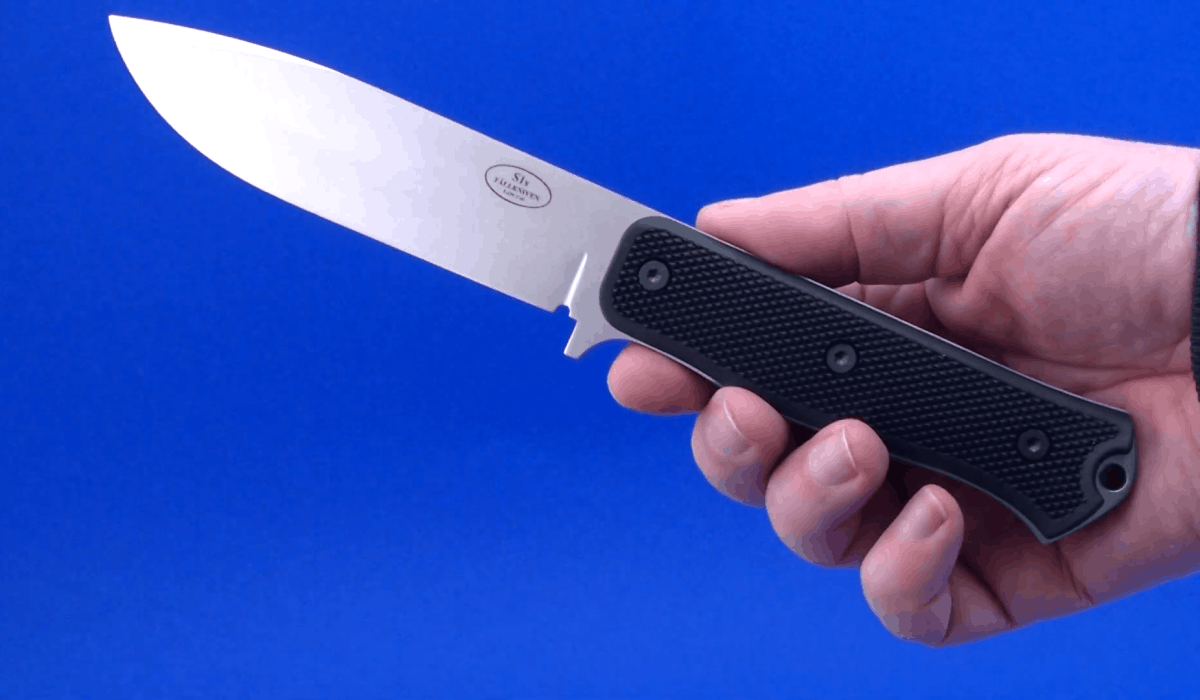
Blade Length: 5.1 inches (13.2 cm)
Blade Thickness: 6 mm
Overall Length: 11.42 inches (29 cm)
Steel Type: Stainless Steel
Weight: 10.2 oz (290 g)
Buck GCK
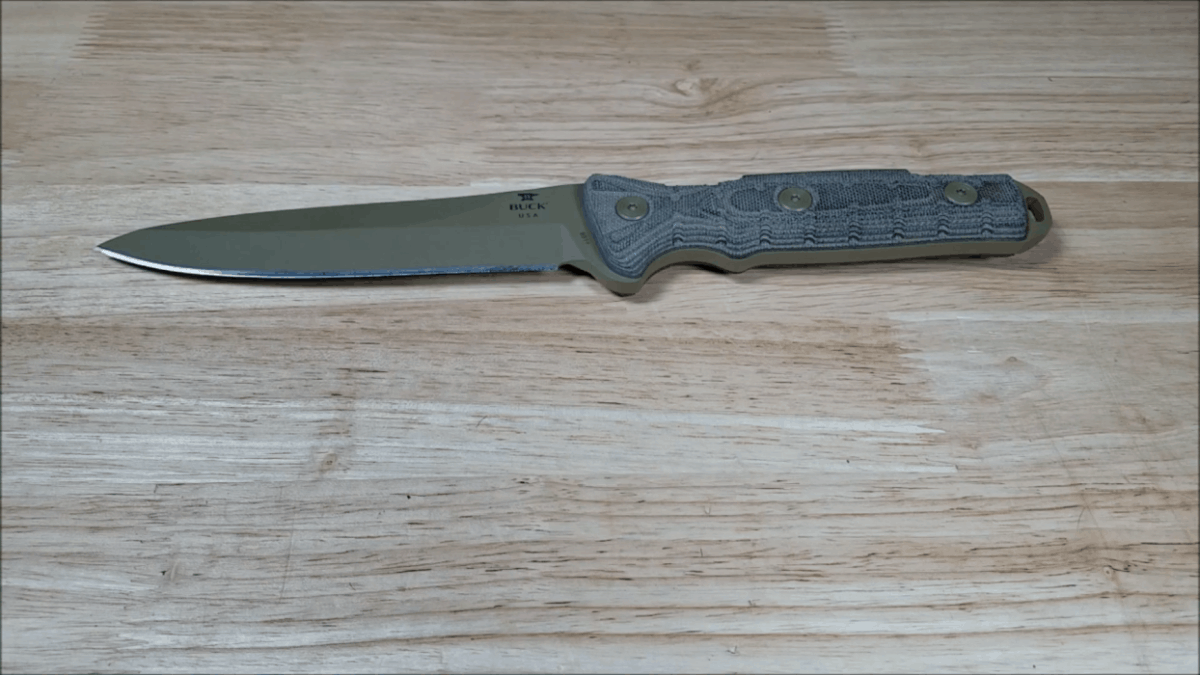
Blade Length: 5.5 inches (14 cm)
Blade Thickness: 5 mm
Overall Length: 10.75 inches (27.3 cm)
Steel Type: High Carbon Steel
Weight: 9.9 oz (280.7 g)
SRK (Survival Rescue Knife)
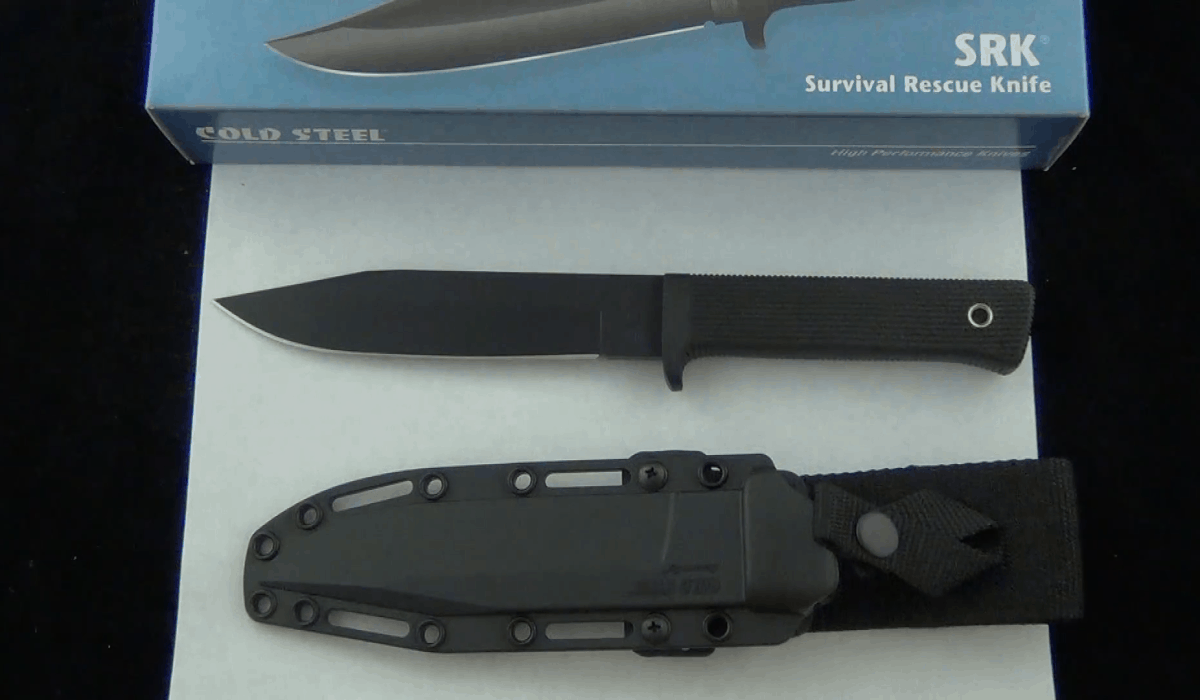
Blade Length: 6 inches (15.24 cm)
Blade Thickness: 5 mm
Overall Length: 10-3/4 inches (27.305 cm)
Steel Type: High Carbon Steel
Weight: 8.2 oz (232.5 g)
Work Tuff Gear Elbrus
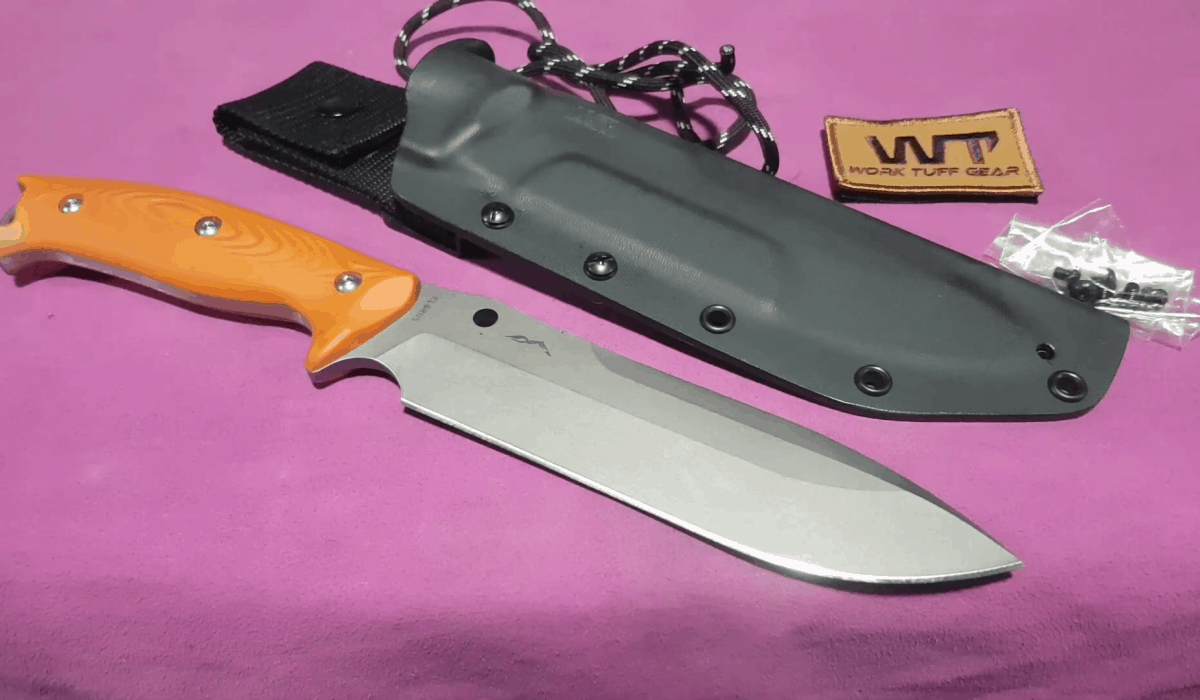
Blade Length: 6.7 inches (17.8 cm)
Blade Thickness: 4.9 mm
Overall Length: 12.2 inches (31 cm)
Steel Type: High Carbon Steel
Weight: 14 oz (396.89 g)
TOPS Knives Apache Dawn
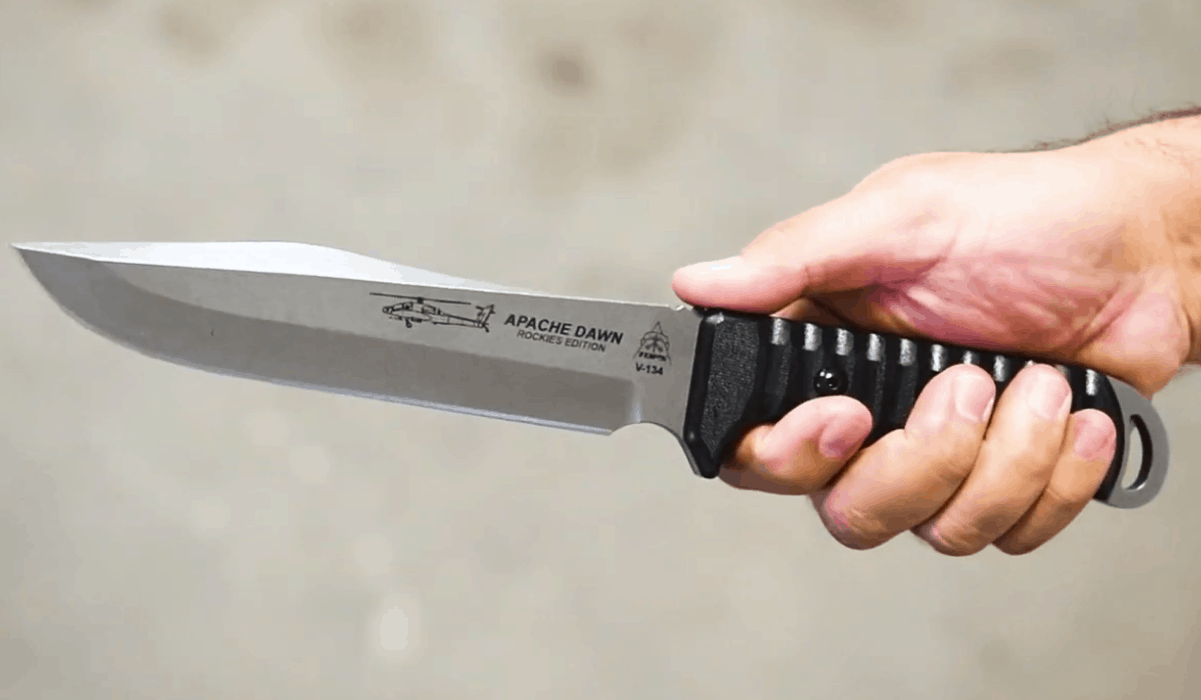
Blade Length: 6.75 inches (17 cm)
Blade Thickness: 6.3 mm
Overall Length: 11.88 inches (30.17 cm)
Steel Type: High Carbon Steel
Weight: 15.5 oz (439.4 g)
KA-BAR BK7
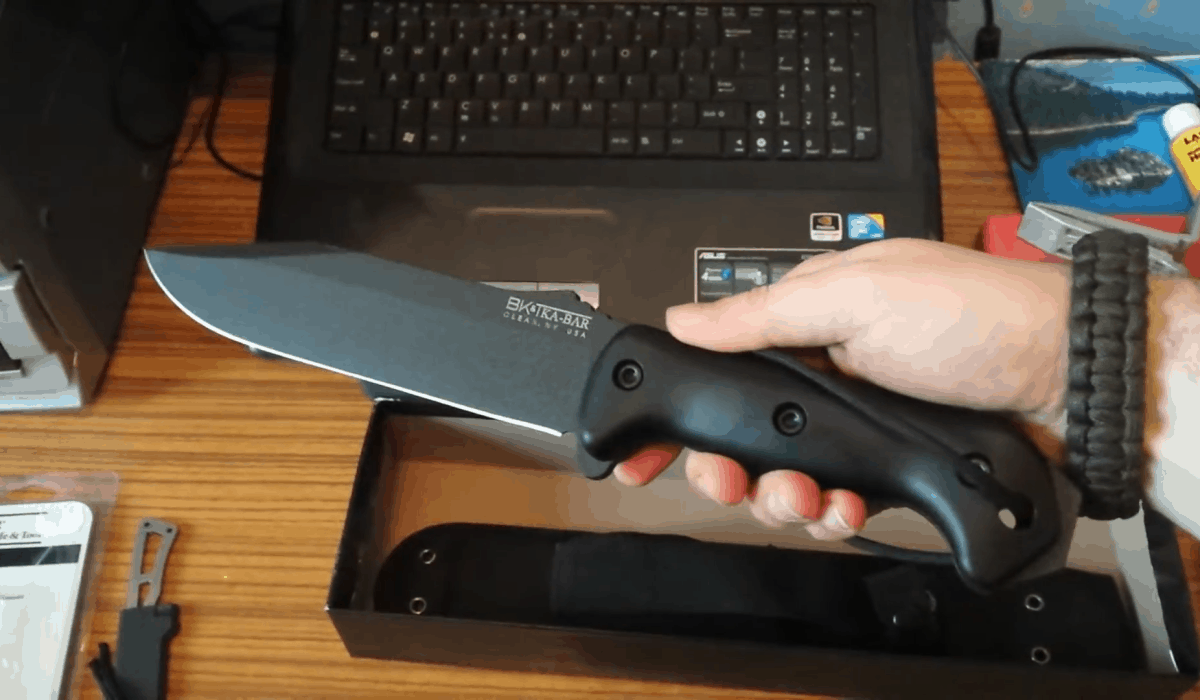
Blade Length: 7 inches (17.8 cm)
Blade Thickness: 4.8 mm
Overall Length: 12.75 inches (32.4 cm)
Steel Type: High Carbon Steel
Weight: 13.6 oz (385.5 g)
Schrade SCHF1
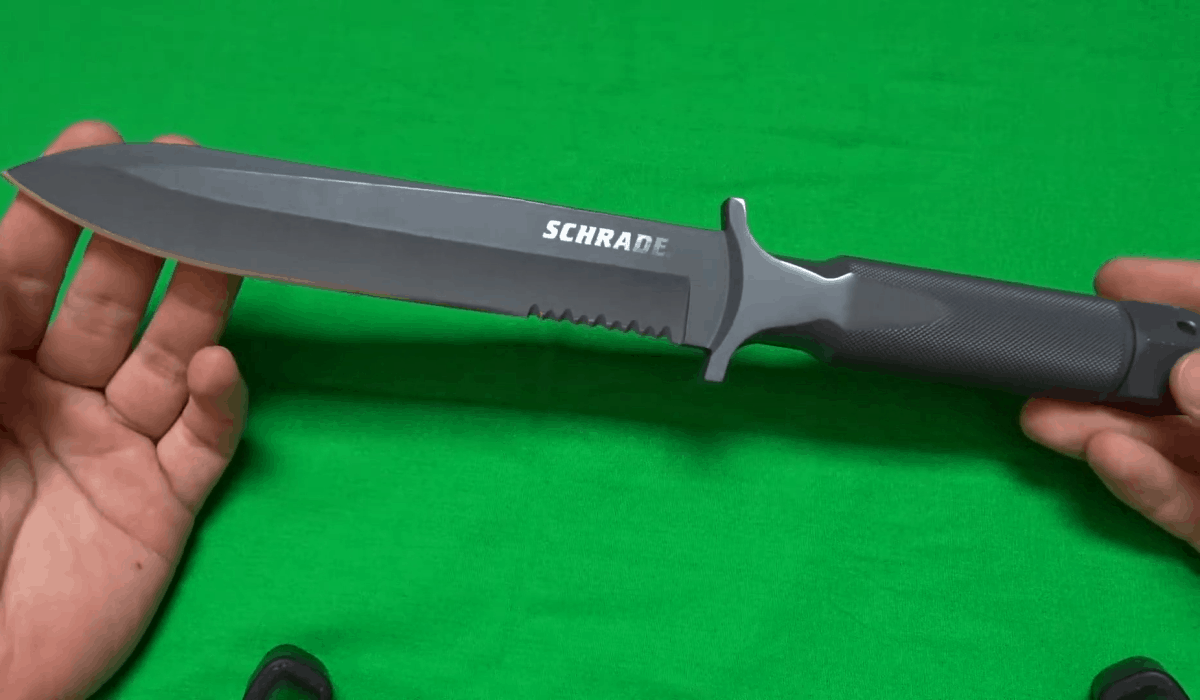
Blade Length: 7.4 inches (18.8 cm)
Blade Thickness: 6.1 mm
Overall Length: 12.8 inches (32.5 cm)
Steel Type: High Carbon Steel
Weight: 18 oz (510 g)
Cold Steel Drop Forged Survivalist
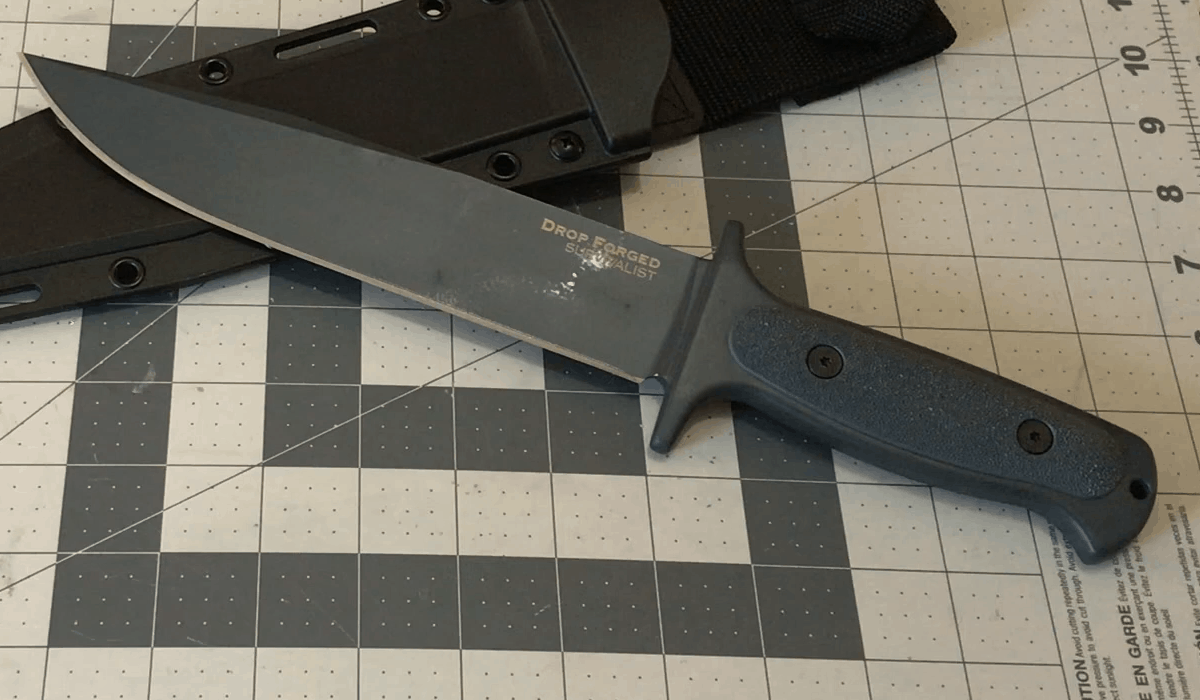
Blade Length: 8 inches (20.32 cm)
Blade Thickness: 5.5 mm
Overall Length: 13 inches (33 cm)
Steel Type: High Carbon Steel
Weight: 18.3 oz (518.79 g)
What Makes a Great Everyday Carry Self-Defense Knife?
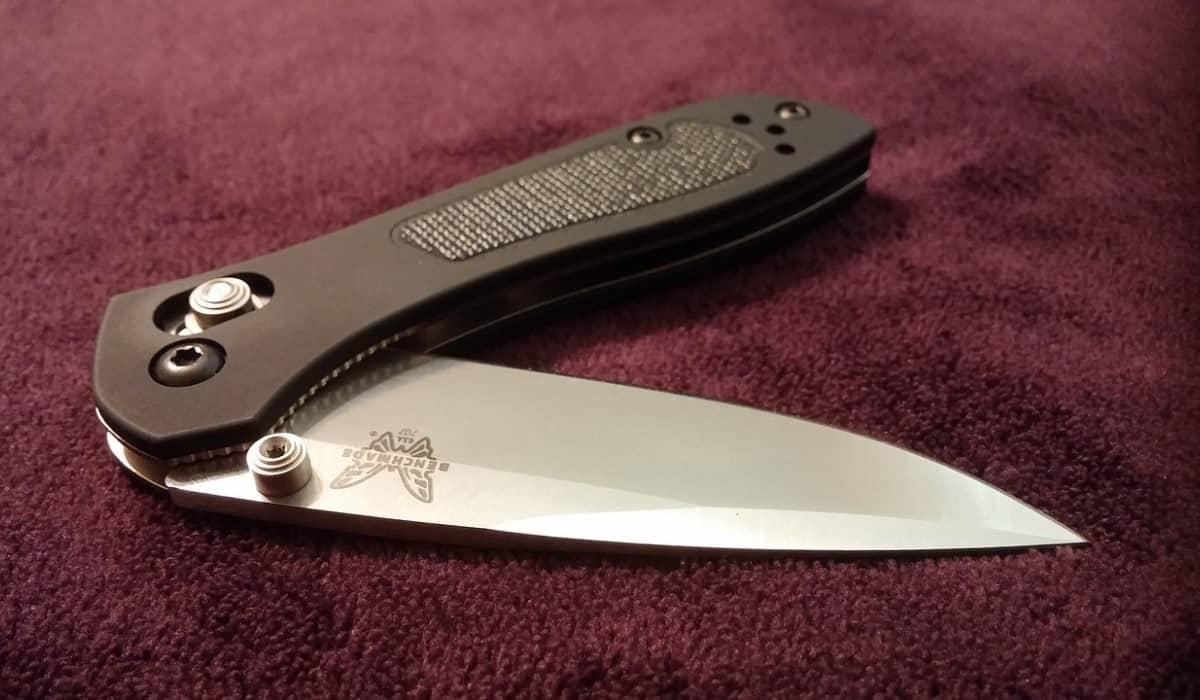
Unlike survival knives, knives that are purely for self-defense should be compact and easy to carry. Depending on your state, additional regulations may apply on what size and make (folding or automatic/assisted open aka switchblade) you can legally carry.
You can check your state’s knife laws via the American Knife & Tool Institute.
Criteria #1: Compact
Self-defense knives should be compact since it’s supposed to be carried daily. It should have a relatively small profile to make it easy to conceal. Folding knives are the most common type of everyday carry knives.
Aside from folding knives, there are also sheathed knives that have a small enough profile which makes them easier to conceal strapped on a belt, clipped in any pocket, or ones that are attached to a lanyard and used as a necklace called neck knives.
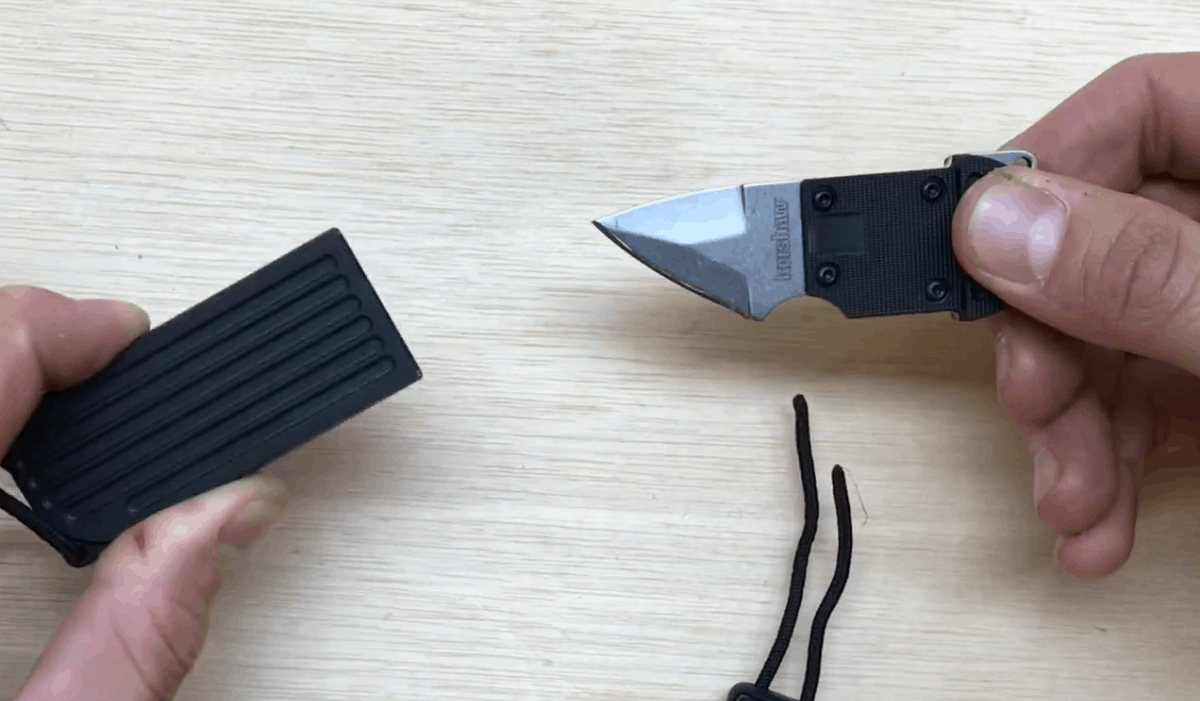
Criteria #2: Pointed, Gentle Curvature
For self-defense purposes, a knife should be able to slash and thrust effectively. Straight and pointed blades are the perfect shape for this purpose. Sharply curved knives like some karambit may look cool, however, their talon-like shape makes it difficult or even impossible to perform thrusting attacks.
Another example of a curved blade is the Spyderco Matriarch. Unlike a karambit, its curve is pronounced at the tip of the blade. Again, thrusting attacks will be harder to pull off using this knife. Moreover, it has serrations along its edge. Not only will it do poorly on stabbing through clothes, but the serrations can also get caught on clothing.
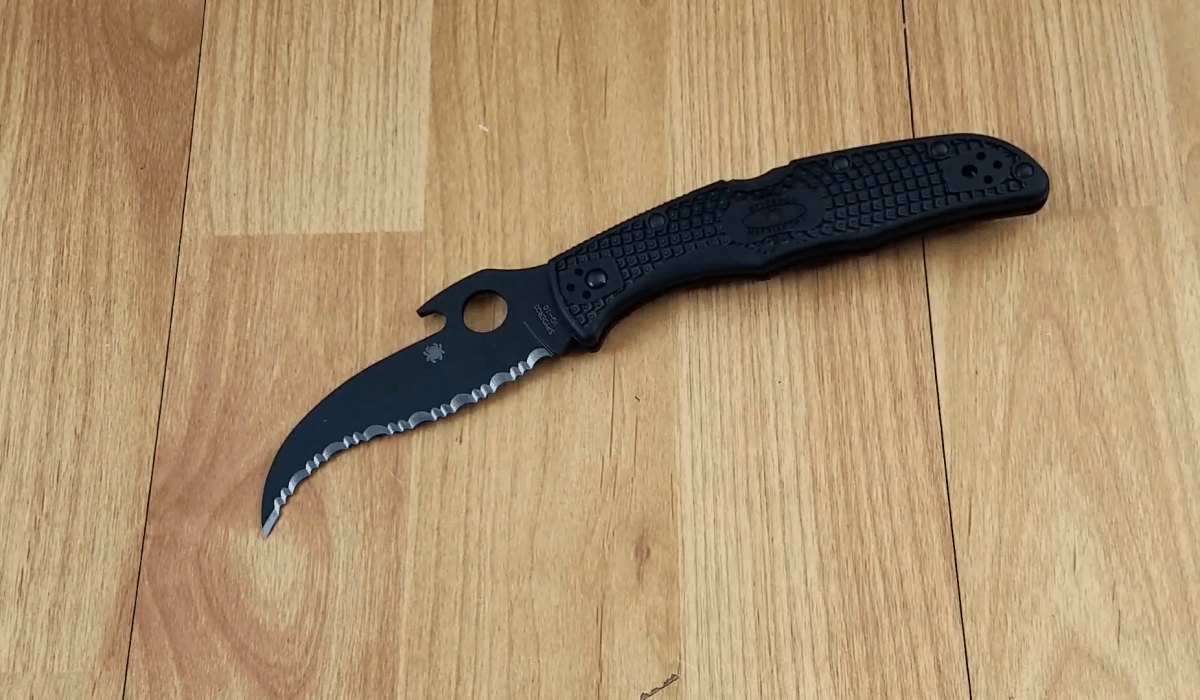
It is why a straight, plain edge and a pointed knife are the best for self-defense. It can slash effectively, and its straight and pointed tip is effective at penetrating clothes. Furthermore, a straight and plain edged knife is more beginner-friendly. A serrated knife and a karambit require adequate training in order to be used effectively and safely.
Other Consideration for Folding Knives: Manual Opening VS Automatic/Assisted Opening/Switchblades
Folding knives can either be manually opened or automatic. Manually opened knives do not rely on springs to open them up. They are generally slower to deploy but are much sturdier due to fewer moving parts. Automatic or assisted open knives on the other hand have dedicated springs that help deploy the knives more rapidly.
However, there are more restrictions when it comes to assisted open knives. Some states limit their total blade length, while others outright ban carrying automatic knives. These also have more moving parts which increases the number of parts that may malfunction or break down.
Self-Defense Knives for Everyday Carry
Benchmade Griptilian 551 Knife
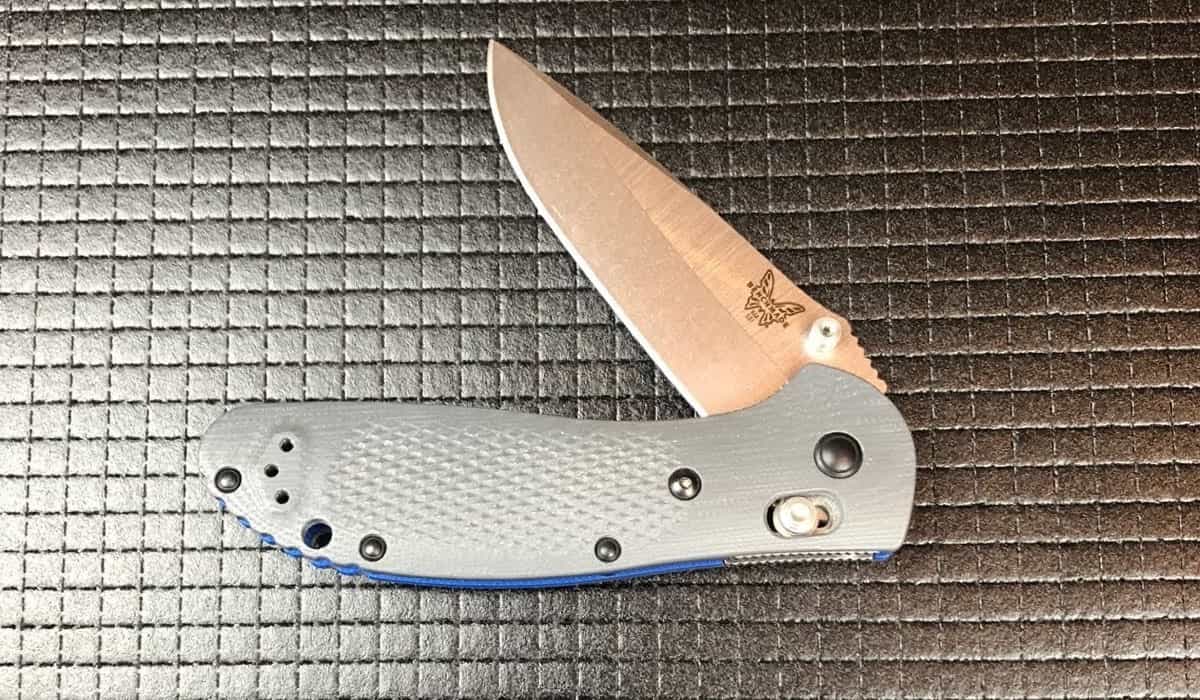
Action: Manual Opening
Blade Length: 3.45 inches (8.76 cm)
Overall Length: 8.07 inches (20.5 cm)
Folded Length: 4.62 inches (11.73 cm)
Steel Type: Stainless Steel
Weight: 3.88 oz (110 g)
Kershaw Shuffle Folding Pocket Knife
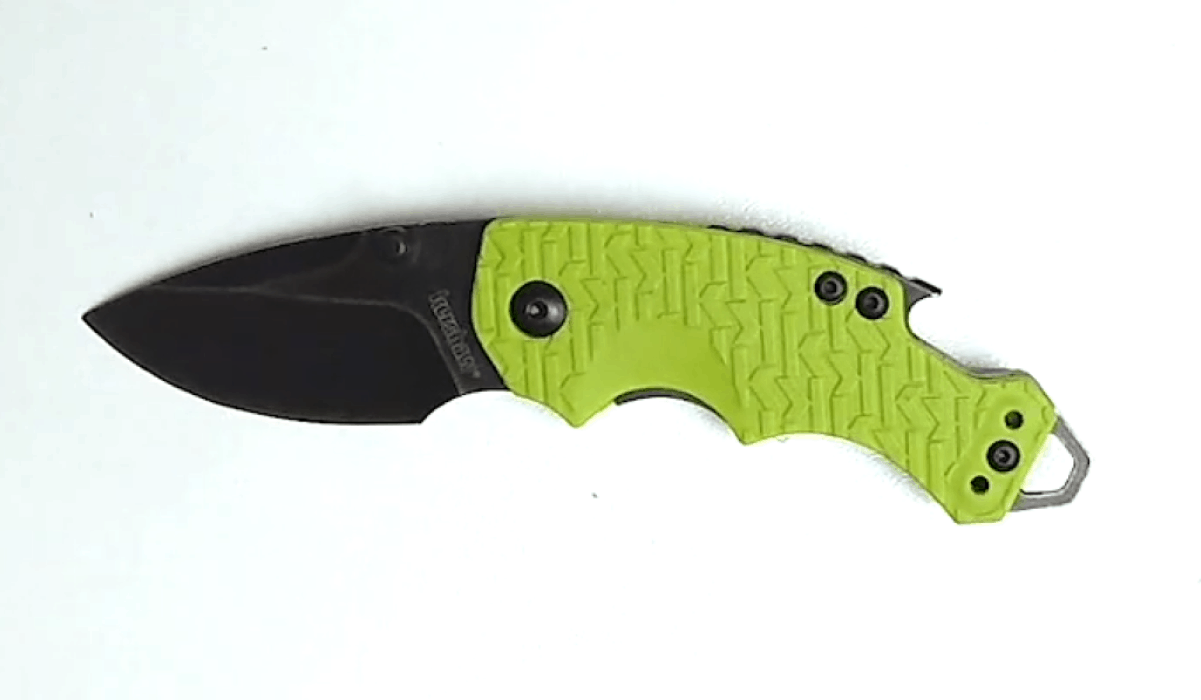
Action: Manual Opening
Blade Length: 2.4 inches (6 cm)
Overall Length: 5.75 inches (14.6 cm)
Folded Length: 3.25 inches (8.3 cm)
Steel Type: Stainless Steel
Weight: 3.5 oz (100 g)
Schrade SCHF54 Full Tang Push Dagger Knife
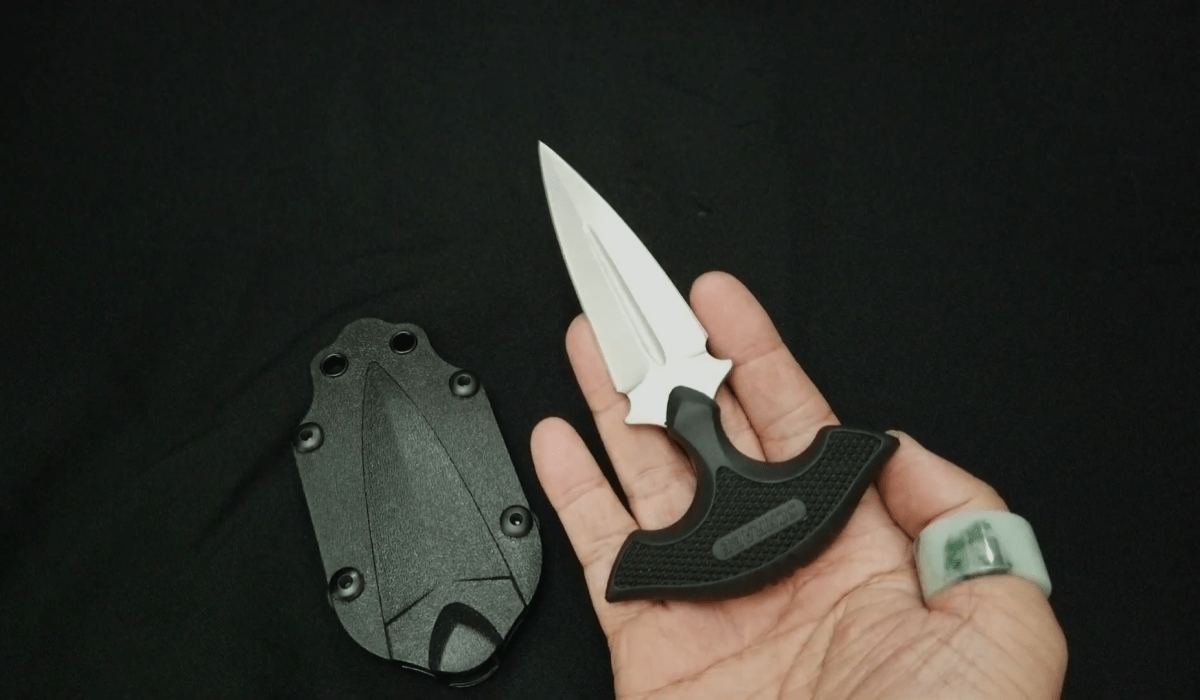
Action: Sheathed Fixed Blade
Blade Length: 3.24 inches (8.2 cm)
Overall Length: 6.47 inches (16.43 cm)
Handle Length: 3.36 inches (8.53 cm)
Steel Type: Stainless Steel
Weight: 3 oz (85 g)
Gerber Ghoststrike Knife
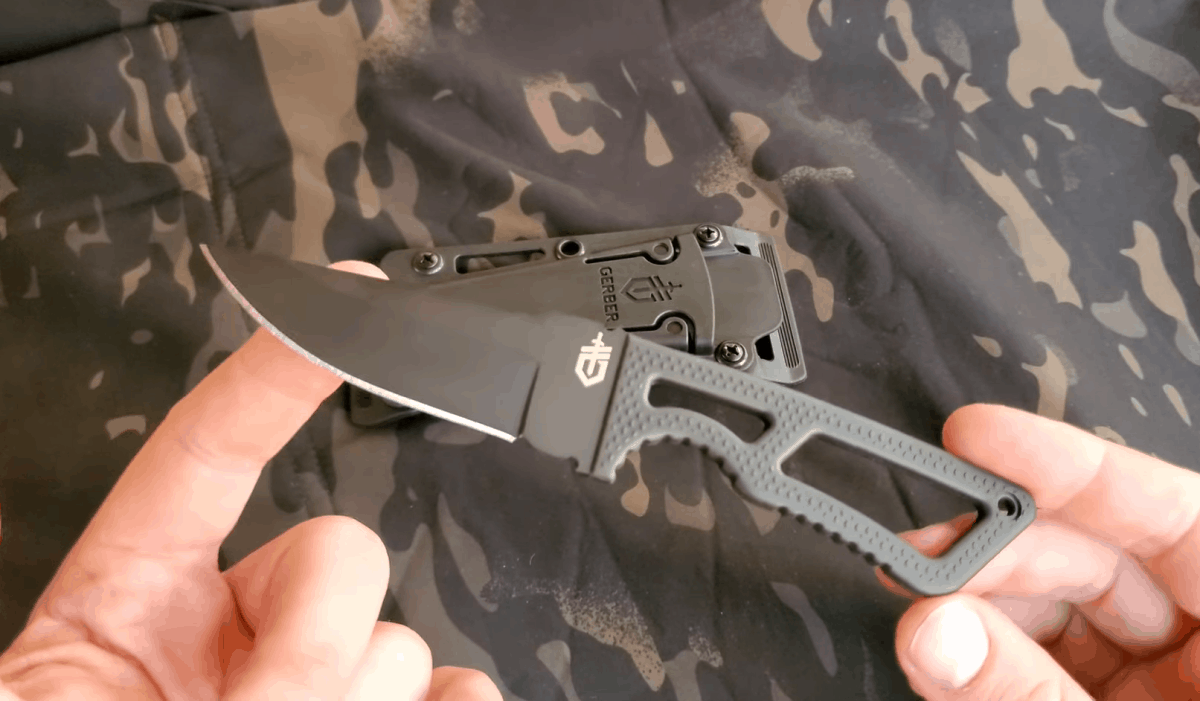
Action: Sheathed Fixed Blade
Blade Length: 3.25 inches (8.25 cm)
Overall Length: 6.875 inches (17.46 cm)
Handle Length: 3.625 inches (9.2 cm)
Steel Type: Stainless Steel
Weight: 3.61 oz (102 g)
KA-BAR, TDI Flipper Folder
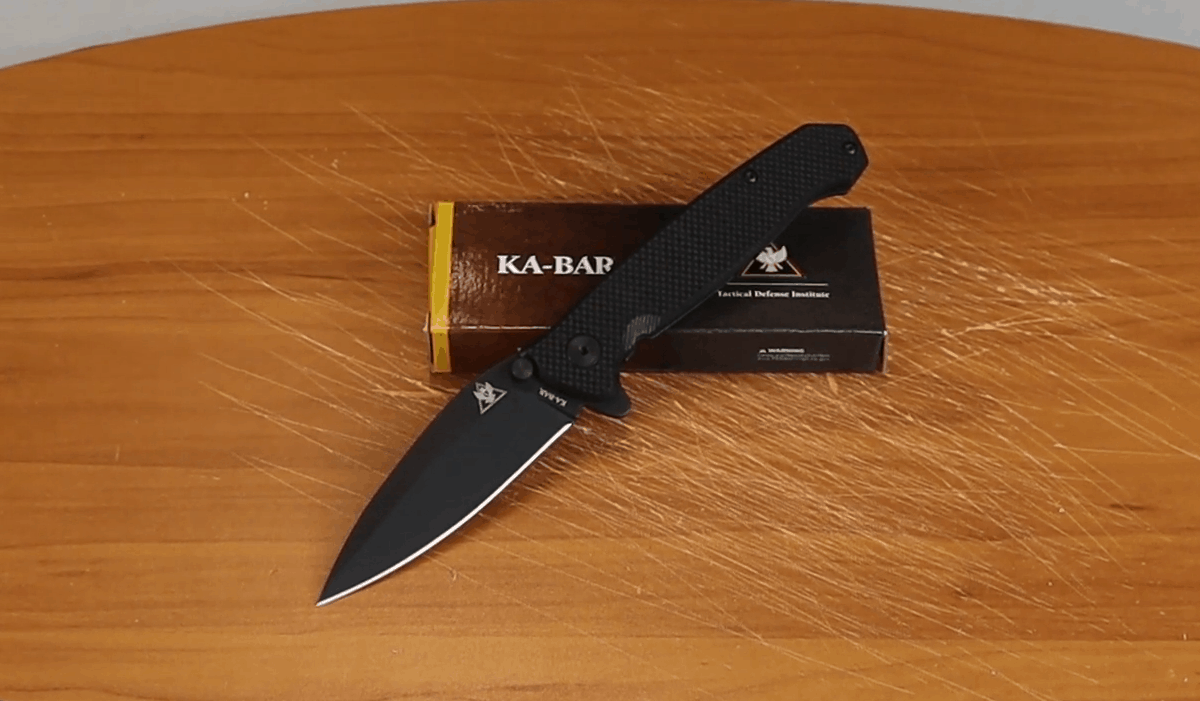
Action: Assisted Opening
Blade Length: 3.5 inches (8.9 cm)
Overall Length: 8.25 inches (21 cm)
Folded Length: 4.75 inches (12 cm)
Steel Type: Stainless Steel
Weight: 4.8 oz (136 g)
Benchmade 583 Barrage
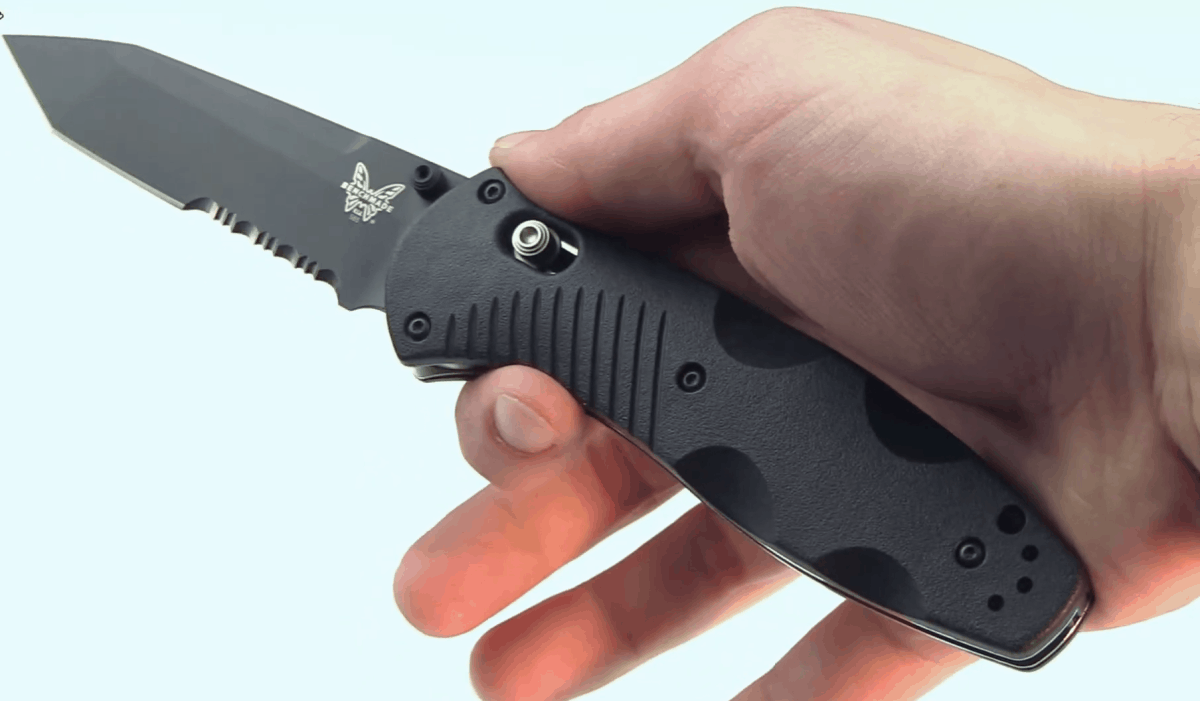
Action: Assisted Opening
Blade Length: 3.6 inches (9.14 cm)
Overall Length: 8.35 inches (21.2 cm)
Folded Length: 4.75 inches (12 cm)
Steel Type: Stainless Steel
Weight: 4.2 oz (119 g)
Schrade Viper 3 OTF
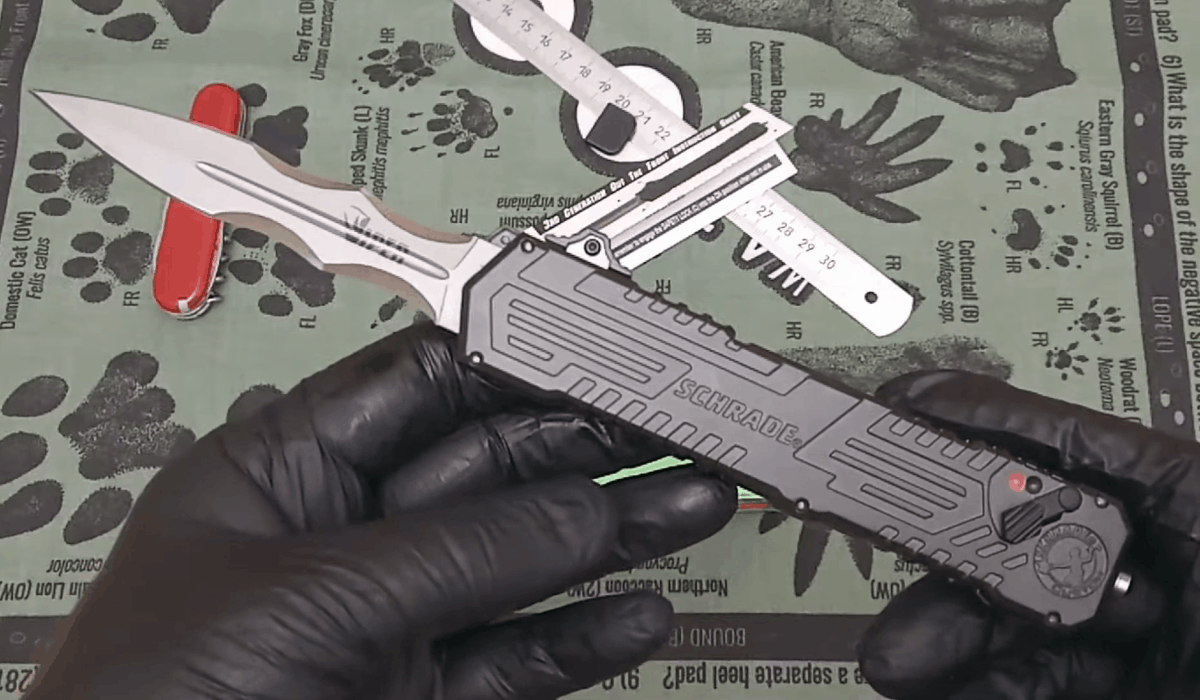
Action: Automatic, Out the Front (OTF)
Blade Length: 3.5 inches (8.9 cm)
Overall Length: 8.75 inches (22.2 cm)
Closed Length: 5.25 inches (13.3 cm)
Steel Type: Stainless Steel
Weight: 4.9 oz (138 g)
Conclusion
Among all the EDC self-defense knives, the automatic OTF knives aka switchblades are the most regulated and often downright illegal in a lot of states. However, they are probably one of the most effective compact knives due to their rapid deployment and ease of use. In terms of survival knives, the choice mainly depends on the user preference as long as the general criteria for the essential features of survival knives are followed.

